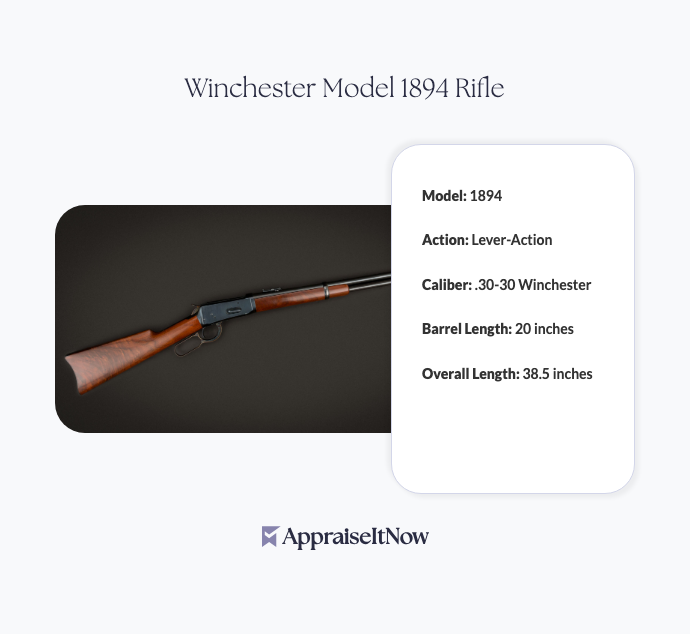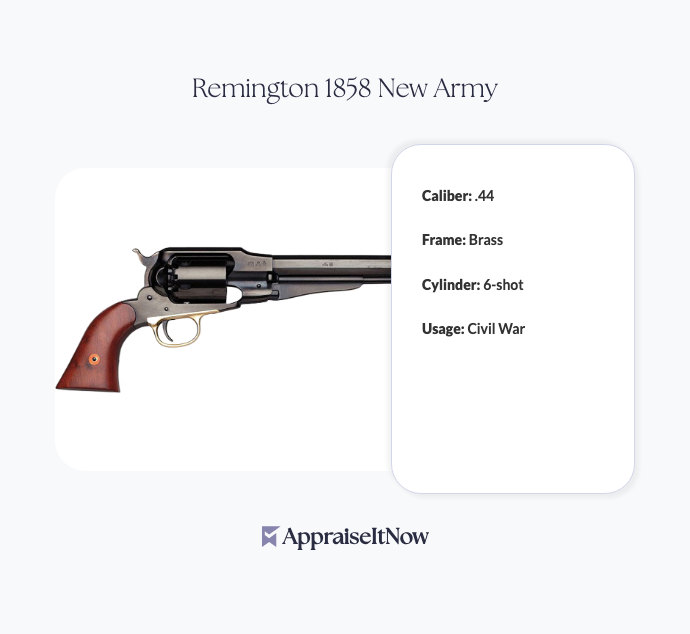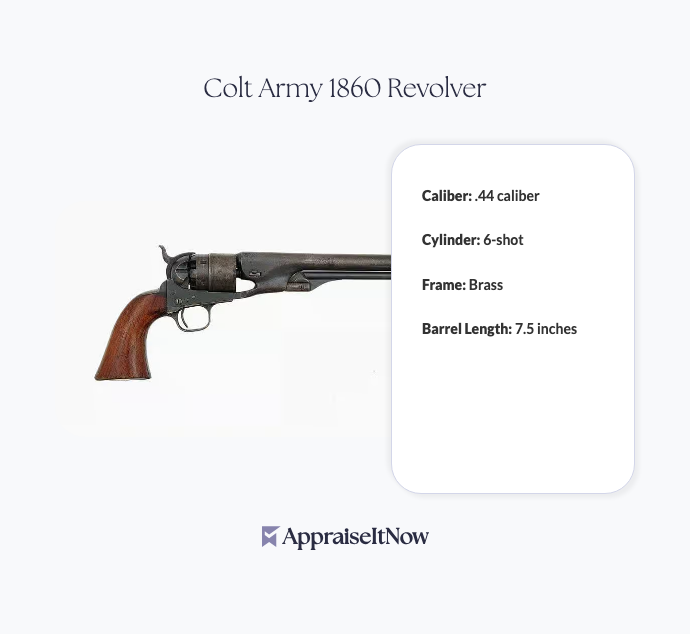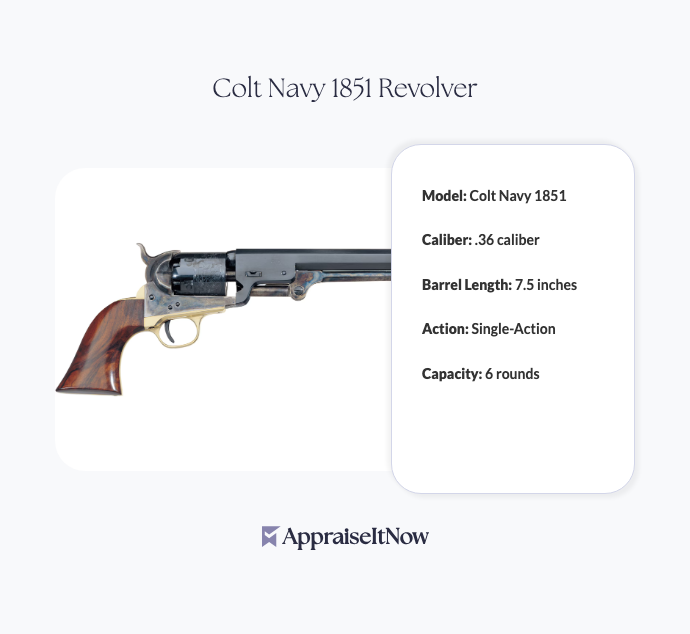<h1>How to Get Your Winchester Model 1894 Rifle Appraised</h1>
<p>The Winchester Model 1894 rifle holds a special place in American firearms history. This iconic lever-action rifle, introduced in 1894, became one of the most popular and widely used repeating rifles of the late 19th and early 20th centuries, particularly in the American West. If you own one of these classic firearms or are considering a purchase, understanding how to get it professionally appraised ensures you have accurate documentation for insurance, sale, or collection purposes.</p>
<h2>Understanding Winchester Model 1894 Value</h2>
<p>The Winchester Model 1894's current market value ranges between <strong>$1,500 and $3,000</strong> for quality examples, though individual rifles can vary significantly based on condition, age, and specific configuration. This substantial value reflects the rifle's historical significance and enduring collector appeal.</p>
<p>With over 7.5 million units produced since its introduction, the Model 1894 achieved unprecedented market success. Yet despite this production volume, these rifles remain highly sought after today. The combination of smooth, reliable lever-action operation and rugged durability created a firearm that transcended its practical purpose to become an American cultural icon. When evaluating <strong>how much a Winchester Model 94 is worth</strong>, condition and production year become critical factors affecting actual appraisal value.</p>
<div class="callout tip"><p><strong>Valuation Insight</strong></p>
<p>Pre-1964 Winchester Model 1894 rifles typically command premium prices compared to post-1964 examples. Earlier production generally indicates superior metallurgy and manufacturing standards that collectors specifically seek out.</p></div>
<h2>Key Factors That Affect Your Model 1894's Appraisal Value</h2>
<p>Several specific elements influence what your Winchester Model 1894 rifle will appraise for. Understanding these factors helps you prepare for the appraisal process and recognize whether your rifle falls at the lower or higher end of the valuation spectrum.</p>
<p><strong>Production year</strong> significantly impacts value. A 1948 Winchester Model 94 or a 1951 model 94 30-30 may appraise quite differently from a 1958 Winchester Model 94 30-30, depending on their condition and any modifications. Earlier production runs often reflect superior manufacturing techniques and materials, making pre-1964 models particularly desirable. The question of when Winchester stopped making the model 94 is straightforward—production continues today—but vintage examples from specific eras command premium valuations.</p>
<p><strong>Condition</strong> represents perhaps the most critical appraisal factor. Your rifle's finish integrity, bore condition, and mechanical function directly determine its market worth. An excellent-condition rifle with clear markings and matching serial numbers will appraise significantly higher than a well-worn example showing heavy use. Collectors evaluating these <a href="/types/antique-gun">antique guns</a> carefully examine the barrel's internal condition, stock finish, and all mechanical components.</p>
<p><strong>Chambering and configuration</strong> matter substantially. The Model 1894's standard <strong>.30-30 Winchester</strong> chambering remains most common and collectible. However, rifles chambered in .25-35 or other period cartridges may have different market values. Original features like factory sights, stocks, and hardware increase appraisal value compared to rifles showing aftermarket modifications.</p>
<p><strong>Provenance and historical documentation</strong> can significantly enhance your rifle's appraised value. If your Model 1894 has documented ownership history, military service records, or association with known historical figures, these elements warrant premium consideration during professional appraisal.</p>
<h2>Why Professional Appraisal Matters</h2>
<p>Getting your Winchester Model 1894 professionally appraised provides more than just a number—it delivers certified documentation suitable for insurance claims, estate planning, and sale transactions. Professional appraisers specializing in <a href="/blog/benefits-of-hiring-an-antique-gun-appraisal-professional">antique guns</a> understand the nuanced market dynamics affecting Model 1894 valuations.</p>
<p>A certified appraisal from a credentialed expert gives you confidence that your valuation reflects current market conditions rather than guesswork. Insurance companies require professional appraisals to establish replacement value for coverage purposes. When selling or considering your rifle as part of estate settlement, documented appraisals provide clear value justification that satisfies legal and financial requirements.</p>
<div class="callout note"><p><strong>Professional Credentials</strong></p>
<p>Seek appraisers with certifications from recognized organizations like AAA, ISA, ASA, or CAGA. These credentials indicate formal training in valuation methodologies and adherence to the Uniform Standards of Professional Appraisal Practice (USPAP).</p></div>
<h2>Preparing Your Rifle for Appraisal</h2>
<p>Before your Winchester Model 1894 appraisal appointment, take specific preparation steps that help the appraiser conduct a thorough evaluation. First, locate your serial number and note it before the appointment—this allows preliminary research into your rifle's approximate production year and configuration. Second, document any modifications or repairs you're aware of, along with original boxes, documentation, or accessories that accompanied the rifle.</p>
<p>Photograph your rifle from multiple angles, including close-ups of any markings, damage, or unusual features. These images provide reference points and allow remote consultation if needed. Store your rifle safely and ensure it's clean but not over-oiled—excessive lubrication can appear suspicious to appraisers and obscure surface condition details they need to evaluate.</p>
<p>However, resist the temptation to attempt restoration or refinishing before appraisal. Many collectors unknowingly decrease value through well-intentioned cleaning or minor repairs. Original patina, even with wear, often appraises higher than refinished examples. Professional appraisers understand this market preference and can properly evaluate your rifle's current state.</p>
<h2>What the Appraisal Process Involves</h2>
<p>When you submit your Winchester Model 1894 for professional appraisal through a service like <strong>AppraiseItNow</strong>, expect a comprehensive evaluation process. Our platform connects you with certified firearms specialists who examine your rifle's condition, verify its authenticity, research comparable sales, and provide detailed written documentation of their findings.</p>
<p>The process typically begins with detailed photography and documentation of all visible features, markings, and condition issues. Appraisers measure and weigh your rifle, record barrel length and overall dimensions, and examine the bore using specialized tools. They verify matching serial numbers on the receiver, barrel, and other components—matching numbers significantly enhance value compared to mismatched parts.</p>
<p>Historical research forms a crucial component of professional appraisal. Appraisers cross-reference production records to establish your rifle's likely manufacturing year and original configuration. They compare your Model 1894 against recent market sales of similar rifles to establish fair market value based on current collector demand. This research distinguishes between pre-1964 manufacture (typically commanding premium valuations) and later production, as well as identifying whether your rifle represents an uncommon variant that might attract specialized collector interest.</p>
<h2>Market Comparisons and Valuation Context</h2>
<p>Understanding how your specific Winchester Model 1894 compares to similar firearms helps contextualize professional appraisal findings. The broader firearms collectibles market shows that well-maintained, documented vintage rifles hold value reliably. These firearms often appreciate more consistently than modern mass-produced firearms, particularly when they possess historical significance or documented usage.</p>
<p>The question many collectors ask is whether <a href="/blog/4-unique-tips-to-help-determine-the-value-of-an-antique-gun">old rifles are worth money</a> and whether they represent sound investments. The Winchester Model 1894's track record suggests yes—these rifles have demonstrated steady value retention, and quality examples show appreciation over decades. Factors supporting sustained demand include the rifle's iconic status in American culture, its proven mechanical reliability, and the finite supply of well-preserved examples.</p>
<div class="callout tip"><p><strong>Investment Consideration</strong></p>
<p>Are old Winchesters a good investment? Historically, pre-1964 Winchester firearms have outperformed many alternative investments, particularly as collector interest grows and available inventory decreases.</p></div>
<h2>Appraising Model 1894 Variants and Rare Configurations</h2>
<p>Not all Winchester Model 1894 rifles are identical, and variant configurations can significantly affect appraised value. Special editions, unusual calibers, or commemorative versions may attract different valuations than standard production rifles. Your appraiser will identify these variants through careful examination of markings, serial number prefixes, and construction details specific to particular production runs.</p>
<p>The Model 1894's versatility across different cartridges created numerous collector interests. While the .30-30 Winchester remains most common, rifles chambered in .32 Special, .38-55, or other period cartridges may hold specialized collector appeal and warrant appropriate valuation consideration. Similarly, rifles with rare features like special sights, custom stocks, or factory engraving deserve premium appraising focus.</p>
<p>Regarding the broader question of what John Wayne's favorite rifle might have been, the Winchester Model 1894's presence in countless Western films reinforced its cultural significance and collector desirability. Film provenance or documented historical associations, when verified, substantially influence appraisal outcomes.</p>
<h2>Documentation and Insurance Following Appraisal</h2>
<p>After receiving your professional appraisal from <strong>AppraiseItNow</strong>, you'll obtain comprehensive documentation suitable for multiple purposes. Insurance companies use these certified appraisals to establish replacement value for your Winchester Model 1894. Unlike casual estimates, USPAP-compliant appraisal reports provide the detailed justification and comparable analysis that insurers require for coverage approval.</p>
<p>For estate planning purposes, professional appraisals establish clear asset values for legal distribution and tax documentation. If you're considering sale through auction houses, firearms dealers, or private transactions, your certified appraisal provides market-based valuation that supports fair-market pricing. Additionally, if questions arise about your rifle's authenticity or value—perhaps during estate settlement or inheritance disputes—professional appraisal documentation provides authoritative third-party verification.</p>
<p>Keep your appraisal report in a secure location alongside your rifle's documentation, photographs, and any certificates of authenticity. Update appraisals every 3-5 years if market conditions shift significantly or if you make any modifications to your rifle, ensuring your insurance coverage and estate documentation remain current.</p>
<div class="callout note"><p><strong>Key Takeaway</strong></p>
<p>Professional appraisal of your Winchester Model 1894 provides certified documentation that protects your investment through accurate valuation, proper insurance coverage, and legally defensible asset documentation. Whether you're buying, selling, collecting, or planning estates, expert appraisal services ensure your rifle's true value is properly recognized and documented.</p></div>







.avif)







